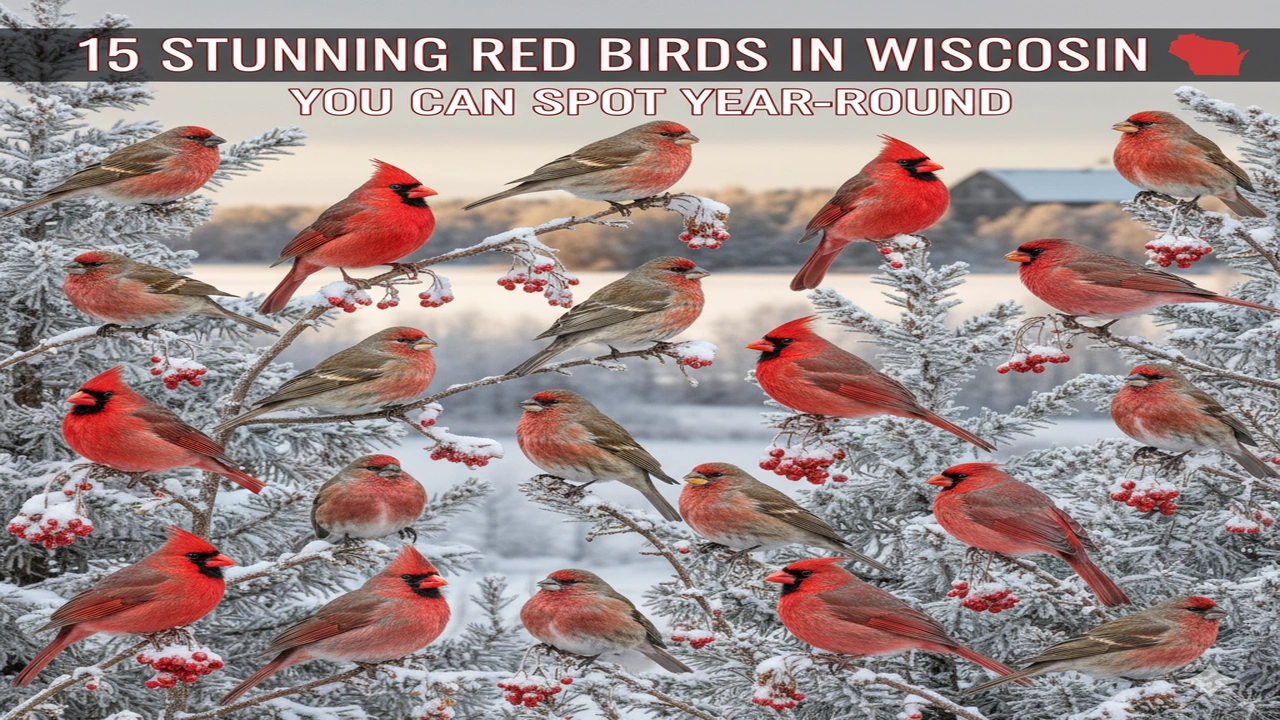Stunning Red Birds in Wisconsin You Can Spot Year-Round
IntroductionThe Scarlet Wonders of Wisconsin
With its sparkling lakes, dense forests, and vast farmlands, Wisconsin isn’t just a paradise for cheese lovers — it’s also a birdwatcher’s dream. Among its many feathered residents, few stand out as brilliantly as the red birds in Wisconsin.
From the crimson Northern Cardinal that brightens snowy mornings to the fiery Scarlet Tanager flitting through summer woodlands, these red-feathered species bring color and life to the Badger State all year long.
Below, we’ll explore 15 beautiful red birds commonly seen across Wisconsin, along with tips on where and how to spot them, their behaviors, and what makes each one special.
1. Northern Cardinal
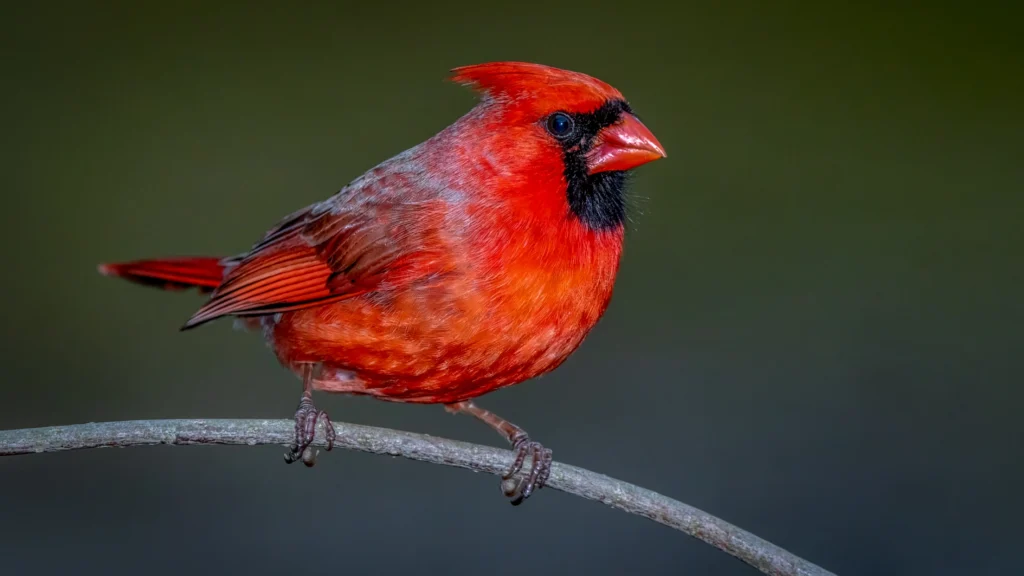
Scientific Name: Cardinalis cardinalis
Lifespan: Up to 15 years
Wingspan: 25–31 cm
Diet: Seeds, grains, fruits, and insects
No list of red birds in Wisconsin is complete without the Northern Cardinal — the state’s unofficial symbol of vibrancy. Males dazzle with their deep red plumage and signature crest, while females wear a soft olive-brown coat with reddish highlights.
You can find these birds year-round in woodlands, backyards, and parks. Cardinals are monogamous and often mate for life. During courtship, males court their partners by feeding them seeds beak-to-beak — a charming sight if you’re lucky enough to catch it.
Their melodic “cheer, cheer, cheer” call is a familiar sound on quiet mornings across Wisconsin.
2. House Finch
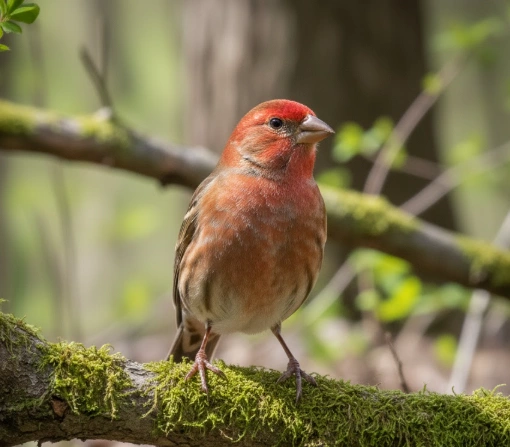
Scientific Name: Haemorhous mexicanus
Lifespan: Up to 11 years
Wingspan: 8–10 inches
Diet: Seeds, buds, fruits
The House Finch is another frequent backyard visitor in Wisconsin. The males sport rosy-red feathers on their heads and chests, contrasting beautifully with their brown streaked bodies. Females are more modest in shades of brown and white.
They adapt easily to urban life — you’ll often find them nesting in hanging planters, porch lights, or even empty wreaths.
During mating season, males perform gentle rituals like feeding the female to strengthen their bond. Though small, these birds bring cheerful chatter wherever they go.
3. American Robin
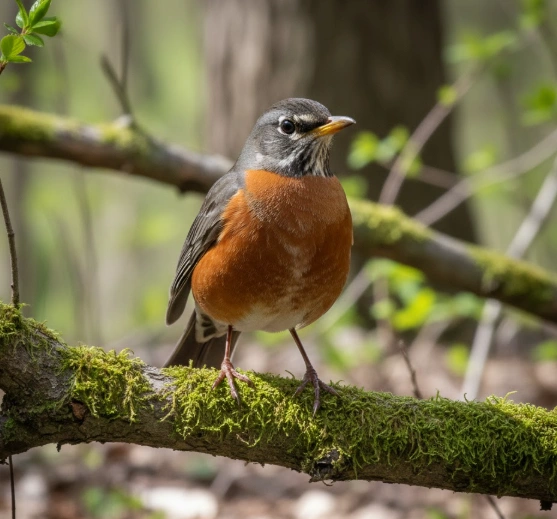
Scientific Name: Turdus migratorius
Lifespan: 2 years on average
Wingspan: 12–16 inches
Diet: Earthworms, insects, and fruits
The American Robin is perhaps one of the most beloved red-orange birds in Wisconsin. Its cheerful song is often the first sign of spring.
Robins love open lawns and gardens, where they can easily dig up earthworms after a rainfall. While they’re active during the day, in winter you might spot them roosting together in trees, sharing warmth through the cold nights.
Their rusty-red chests and confident stance make them easy to recognize even from a distance.
4. Scarlet Tanager
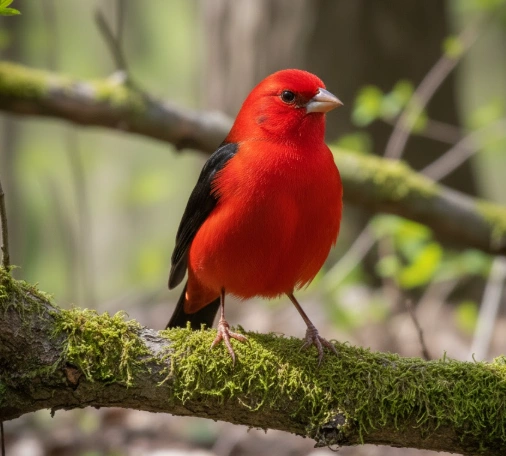
Scientific Name: Piranga olivacea
Lifespan: 10–12 years
Wingspan: 25–30 cm
Diet: Insects, bees, ants, and fruits
If you’ve ever seen a flash of red and black darting between oak branches, chances are you’ve spotted a Scarlet Tanager.
These summer visitors are true jewels of the Wisconsin forests. Males have bright red bodies with contrasting black wings, while females wear a soft olive-yellow hue.
They arrive in Wisconsin around May to breed, preferring dense deciduous forests. After laying about four light blue eggs, the female tends the nest while the male helps feed the young once they hatch.
5. Common Redpoll
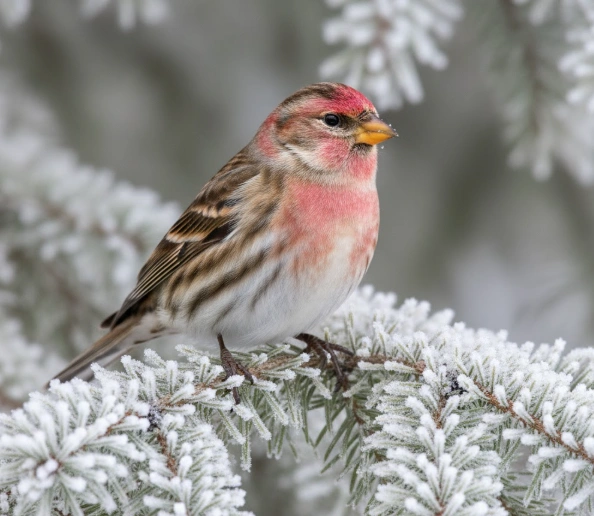
Scientific Name: Acanthis flammea
Lifespan: 2–3 years
Wingspan: 19–22 cm
Diet: Seeds and insects
The Common Redpoll is a small but spirited bird with a splash of red on its forehead and chest. You’re more likely to spot these little Arctic travelers in Wisconsin during winter.
They thrive in cold conditions, feeding on birch and alder seeds. Despite their size, they are excellent fliers and can handle blizzards with ease.
In late autumn, they migrate slightly south, then return north in early spring to breed.
6. Pine Grosbeak
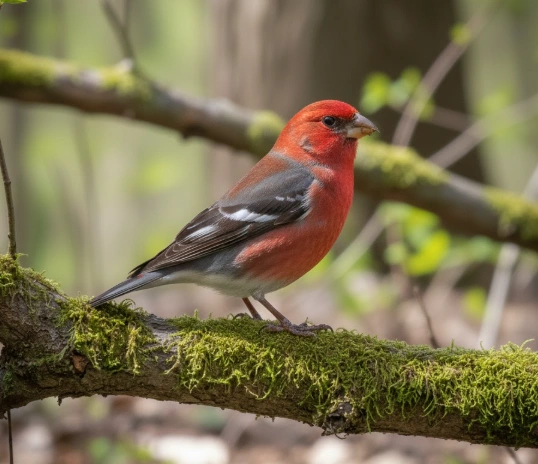
Scientific Name: Pinicola enucleator
Lifespan: Around 10 years
Wingspan: 13 inches
Diet: Seeds, berries, buds, and insects
The Pine Grosbeak, sometimes called the “gentle giant,” is one of the largest finches found in Wisconsin.
Males display soft rose-red feathers on their heads and backs, while females are mostly yellow-gray. You can often spot them in coniferous forests or high mountain regions feeding quietly on berries.
Unlike other finches, Pine Grosbeaks are calm and slow-moving — often letting humans approach fairly close before fluttering away.
7. Purple Finch
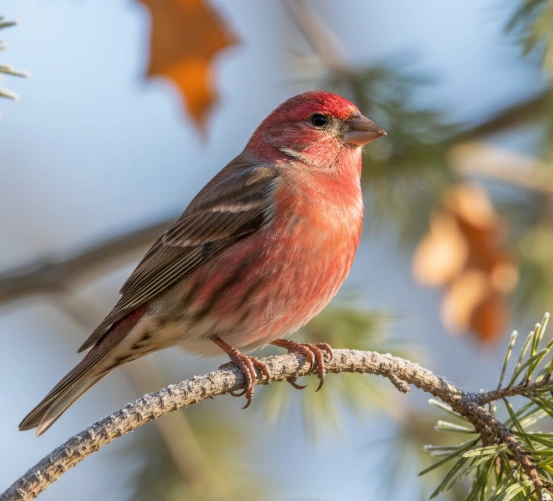
Scientific Name: Haemorhous purpureus
Lifespan: Up to 7 years
Wingspan: 25 cm
Diet: Seeds, fruits, and insects
Don’t let the name fool you — the Purple Finch is more crimson than purple. Males appear dipped in raspberry-red paint, especially on their heads and chests, while females have brown streaks and white underparts.
These birds prefer coniferous and mixed forests but will happily visit backyard feeders filled with sunflower seeds.
Their warbling song adds music to Wisconsin’s late spring mornings, and their shy temperament makes each sighting feel special.
8. Red-Bellied Woodpecker
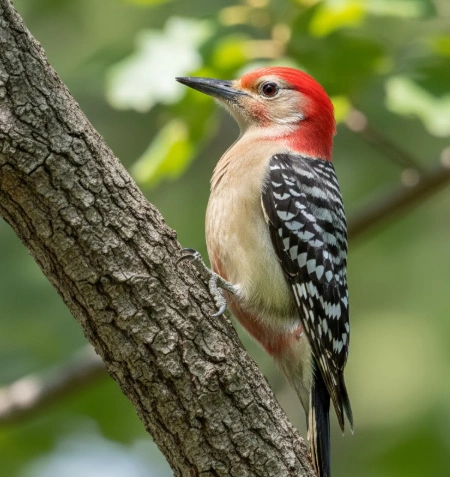
Scientific Name: Melanerpes carolinus
Lifespan: Around 12 years
Wingspan: 15–18 inches
Diet: Beetles, centipedes, fruits, nuts
The Red-Bellied Woodpecker isn’t entirely red — its name comes from the faint pinkish hue on its belly. However, its red cap and nape stand out vividly.
These energetic birds are common in Wisconsin’s woodlands and suburbs. They make loud, rolling calls that echo through the trees and love drumming on hollow trunks or even metal roofs to mark their territory.
Their zebra-striped backs and bold personalities make them unmistakable.
9. Red-Headed Woodpecker
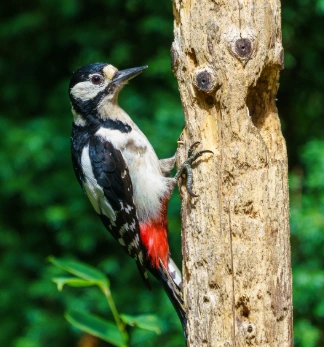
Scientific Name: Melanerpes erythrocephalus
Lifespan: Around 10 years
Wingspan: 16–17 inches
Diet: Insects, nuts, and berries
The Red-Headed Woodpecker is a showstopper with its scarlet head, white belly, and glossy black wings.
These birds are known for their unique habit of storing food inside tree cavities — one of the few woodpecker species to do so.
They’re highly territorial, often seen defending their nests and even chasing away other birds. If you explore Wisconsin’s open woodlands or farmlands in summer, keep your eyes peeled for that flash of red and white.
10. Rose-Breasted Grosbeak
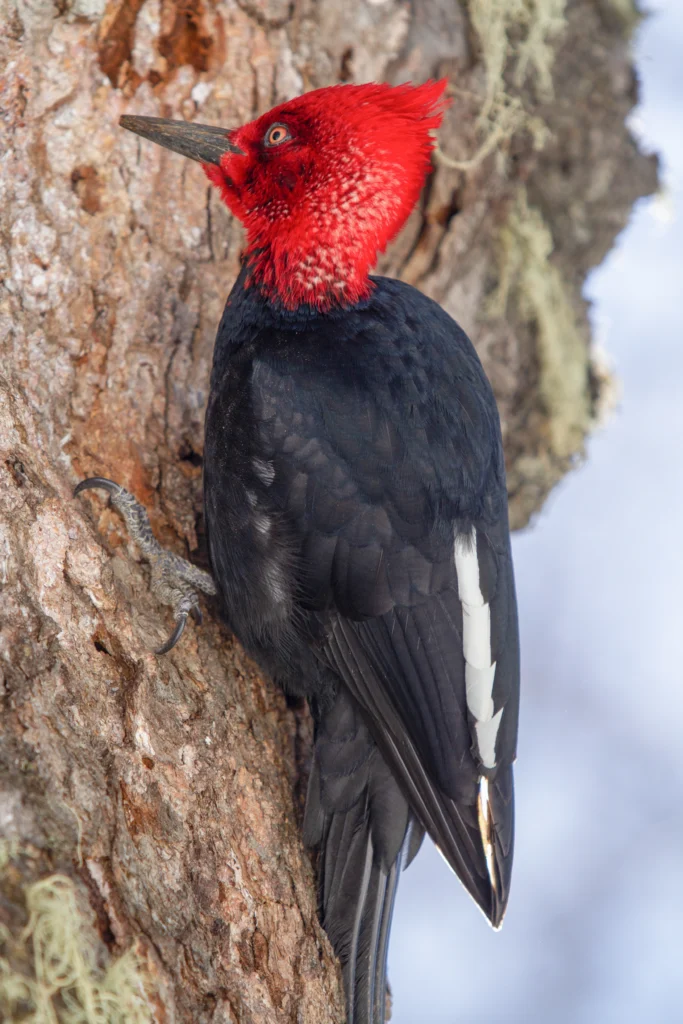
Scientific Name: Pheucticus ludovicianus
Lifespan: Around 7 years (up to 24 in captivity)
Wingspan: 11–13 inches
Diet: Seeds, berries, and insects
The Rose-Breasted Grosbeak is a breathtaking sight — males feature a black body with a bold red triangle across their chest. Females, on the other hand, are streaked brown with lighter bellies.
These birds breed in Wisconsin during spring and early summer. You can often hear their melodious song before you spot them — a tune often compared to a sweeter version of the American Robin’s call.
They build cup-shaped nests in trees, typically 10–15 feet off the ground.
11. Summer Tanager
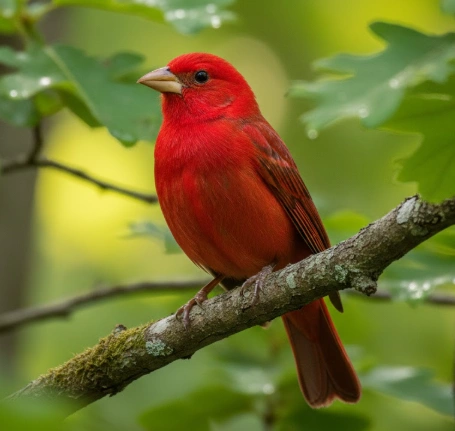
Scientific Name: Piranga rubra
Lifespan: Around 5 years
Wingspan: 28–30 cm
Diet: Insects and spiders
The Summer Tanager is North America’s only completely red bird, with adult males glowing in vibrant rose-red feathers. Females are yellowish-orange.
In Wisconsin, they favor oak woodlands and forest edges, often perching high in the canopy searching for flying insects.
Their soft, whistled song sounds almost like a cheerful conversation drifting through the trees.
12. Pyrrhuloxia (Desert Cardinal)
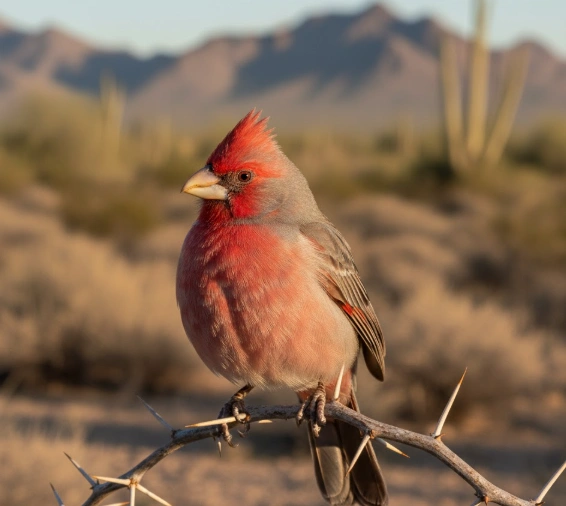
Scientific Name: Cardinalis sinuatus
Lifespan: Up to 9 years
Wingspan: 10–12 inches
Diet: Seeds, fruits, and small insects
Closely related to the Northern Cardinal, the Pyrrhuloxia looks like its dusty cousin. With grayish-brown feathers, a red face and crest, and a curved yellow bill, this bird is perfectly adapted to arid regions.
Though more common in the Southwest, some are occasionally spotted in southern Wisconsin during warmer months.
They sing lively, metallic notes and defend their territories with surprising boldness.
13. Painted Bunting
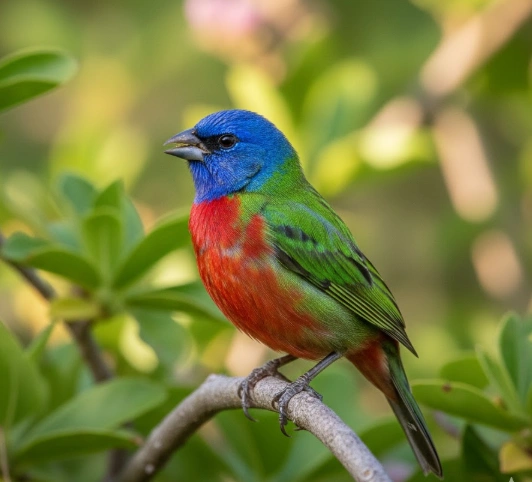
Scientific Name: Passerina ciris
Lifespan: Around 12 years
Wingspan: 21–22 cm
Diet: Seeds, grasses, and insects
Few birds rival the Painted Bunting in color. Males are living rainbows — red underparts, blue heads, and green backs. Females wear softer green plumage for camouflage.
Though less common, they have been sighted in southern Wisconsin during migration seasons.
Painted Buntings are notoriously shy, often hiding in dense shrubs. If you want to attract them, set up native shrubs and quiet feeders away from noise or heavy activity.
14. Red Crossbill
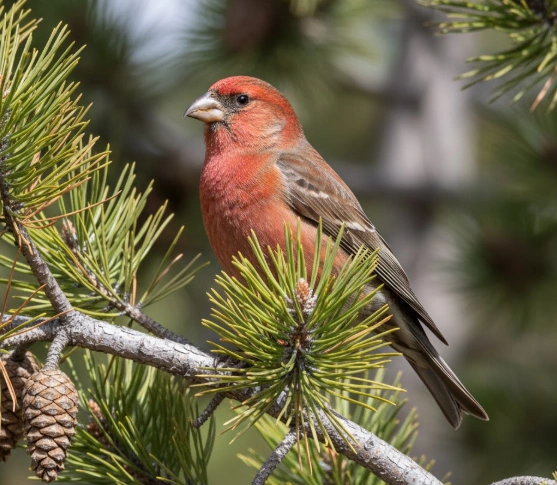
Scientific Name: Loxia curvirostra
Lifespan: 8–10 years
Wingspan: 27–29 cm
Diet: Conifer seeds
The Red Crossbill earns its name from the unique crisscross shape of its bill, designed for prying open pinecones.
Males are reddish-orange, while females are olive-yellow. They live in coniferous forests year-round and form small flocks that travel in search of good cone crops.
If you’re hiking through Wisconsin’s northern pines in late summer, listen for their sharp “chip-chip” calls above.
Conclusion: A Red Symphony in Wisconsin’s Skies
From city parks to forest trails, the red birds in Wisconsin add a splash of life to every season. Their brilliant plumage, diverse songs, and fascinating habits make them a joy to observe — whether you’re an avid birder or just love the sight of color against winter snow.
So next time you hear a cheerful whistle outside your window, take a moment to look closer — one of these scarlet beauties might just be paying you a visit.
FAQs About Red Birds in Wisconsin
1. What is the most common red bird in Wisconsin?
The Northern Cardinal is the most commonly seen red bird in Wisconsin and stays active all year long.
2. When is the best time to spot red birds in Wisconsin?
Spring and summer are ideal for spotting colorful species like the Scarlet Tanager and Rose-Breasted Grosbeak, though Cardinals remain visible even in winter.
3. Do red birds migrate from Wisconsin?
Some do. Birds like Scarlet Tanagers and Painted Buntings migrate south for winter, while Northern Cardinals and Woodpeckers stay year-round.
4. How can I attract red birds to my backyard?
Set up feeders with sunflower seeds, suet, or fruit, and add native shrubs for shelter. Avoid using pesticides that may harm their food sources.
5. Are red birds considered good luck?
Yes! Many cultures believe spotting a red bird symbolizes joy, energy, and positive change.

